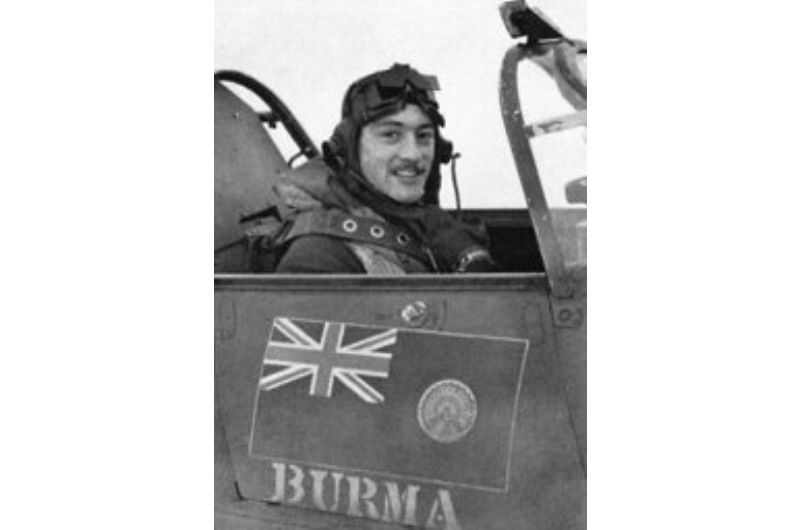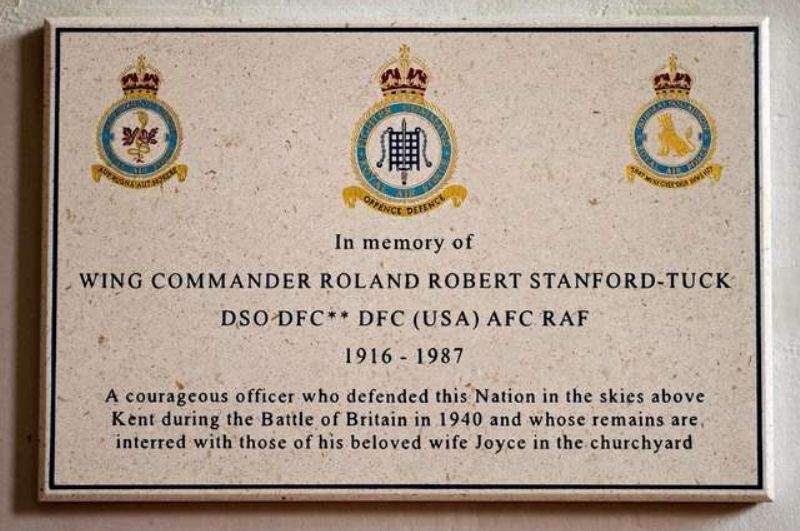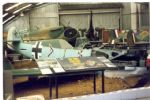Robert Stanford Tuck
- 14
- See on map
The Wing commander Roland Robert Stanford Tuck DSO, DFC and two bars, Air Force Cross (July 1, 1916 - May 5, 1987) was a British fighter pilot, ace of the World War II. He particularly distinguished himself during theBattle of Britain.
During the Battle of Britain he hit a lone Junkers Ju 88 over Cardiff, Wales. Before fleeing, the plane drops its bombs at random. One of them falls on an army barracks and kills a single soldier: John King Spark, Standford-Tuck's brother-in-law
In July and August, his record of achievement grows. On August 18 he shoots down a Junkers Ju 88 and damages another, but his plane is hit and he has to parachute out. On August 25, he shot down a Dornier Do 172 off the Welsh coast, but his engine was hit. Gliding to the coast, he manages to land on his belly, practically on the edge of the cliffs.
In September, he is appointed squadron leader and takes command of no. 257 Burma , based at RAF Coltishall , flying Hawker Hurricanes. On September 15, he takes his squadron into action on the toughest day of the Battle of Britain. His formation takes on nearly sixty enemy aircraft. He shoots down a Messerschmitt 110, then a week later a Messerschmitt 109. On October 4, he shot down another Junkers Ju 884. In October, he paid a visit to his former No. 92 squadron, and after flying a Spitfire that had been loaned to him, recorded one more victory, against a Messerschmitt 1094.In January 1941, he was awarded the Distinguished Service Order (DSO).
In March 1941, he received a second clasp (Bar) to his DFC. In April 1941, while having a drink in a pub with some comrades, a hunch urges him to get out of the place as soon as possible. He tried to persuade his comrades to leave with him, but none would go. So he goes out alone. No sooner has he walked a few yards than a bomb falls on the pub, killing all its occupants
On June 21, 1941, his Hurricane is hit and he has to parachute out to sea. A British ship rescues him.
In December 1941, he was appointed Chief of the Biggin Hill Wing, which was equipped with Spitfire VB.
In 1941, he managed to land after being hit, but no sooner had he touched down than a wing came off.
On January 28, 1942, while taking part in a sweep mission over France, his aircraft was hit by fire from the ground near Boulogne-sur-Mer. He had to make an emergency landing, but still managed to strafe a German flak battery. Captured, he is not lynched by the German soldiers, much to his surprise. The Germans come to help him extricate himself from his plane and drag him towards the battery he has put out of action. One of his 20-millimeter shells had penetrated the mouth of one of the same-caliber tubes and split it open like a peeled banana. The Germans were so astonished by this feat that they forgot all about their dead comrades. He was taken to the German ace Adolf Galland, who welcomed him courteously. Galland had extended the same welcome to another British ace: Douglas Bader, the legless pilot. At the time of his capture, Stanford-Tuck had to his credit 29 confirmed aerial victories (27 aircraft shot down, two aircraft shot down in collaboration), plus six probable destructions, six enemy aircraft damaged and one aircraft damaged in collaboration.
Prisoner of war, Stanford-Tuck was held for three years at Stalag Luft IIIin Żagań (Sagan). After several failed escape attempts, in January 1945 he finally managed to escape in the company of a Polish RAF pilot, Captain Zbishek Kustrzynsky, and managed to reach Soviet lines. The Soviets send him back to Britain.
Source Wikipedia
Photo credit stele Photo © The Carlisle Kid(cc-by-sa/2.0)





